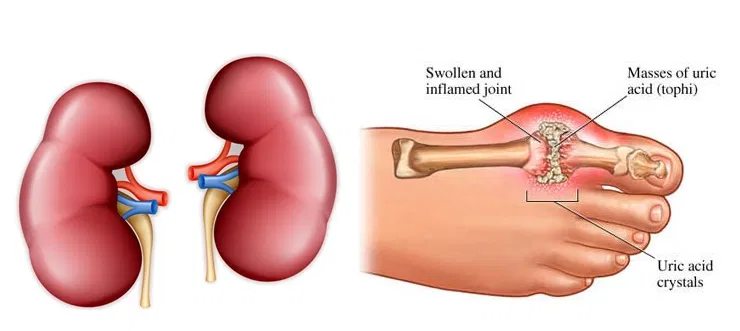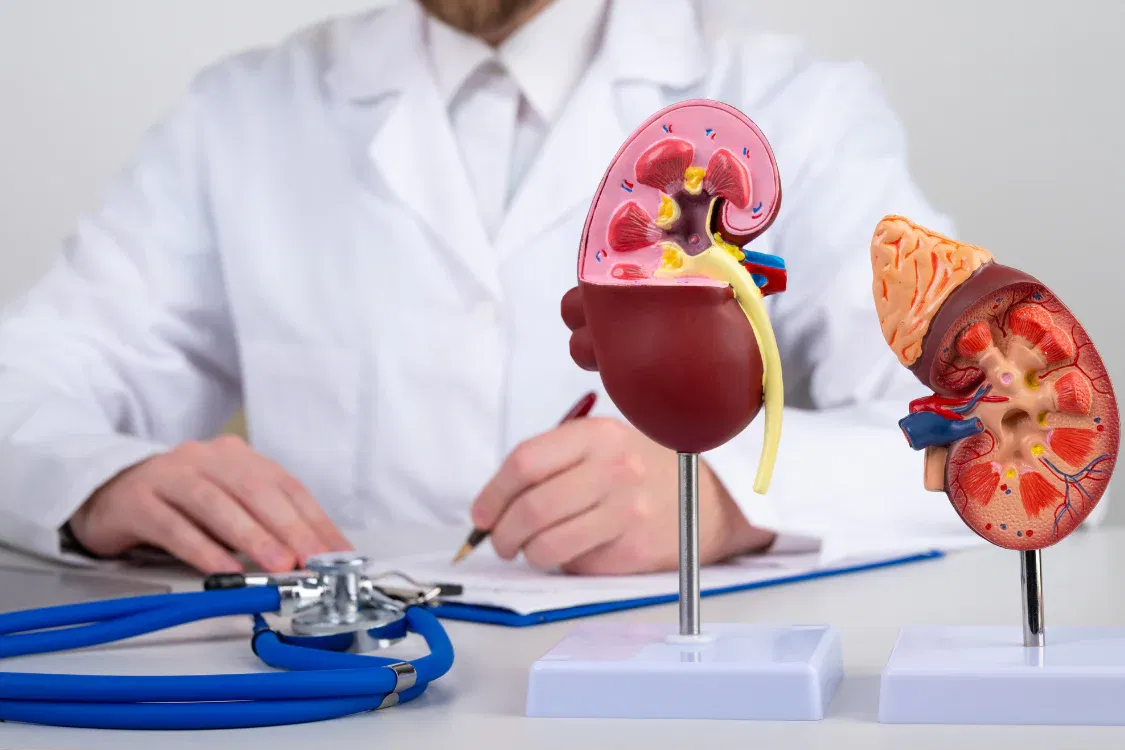Gout and kidney disease share a deeper connection than most people realize. Each condition can worsen the other, creating a damaging cycle that can be difficult to escape without proper care and timely intervention. Understanding how these two are linked — and how they influence each other — is essential to maintaining long-term health.

1. Understanding Gout and the Role of Uric Acid
Gout is a painful form of inflammatory arthritis that develops when uric acid builds up excessively in the bloodstream — a condition known as hyperuricemia.
Normally, your kidneys act as filters, removing uric acid from your blood and eliminating it through urine. But if your body produces too much uric acid or your kidneys can’t expel it efficiently, the excess starts to crystallize. These sharp, needle-like uric acid crystals settle in your joints, leading to sudden and excruciating flare-ups.

The most common site of attack is the big toe, but gout can affect other joints such as the ankles, knees, wrists, and elbows. During these episodes, joints become swollen, red, hot, and extremely tender — sometimes making it painful even to touch the skin above them.
2. How Gout Can Harm the Kidneys
The damage from gout doesn’t stop at the joints. Persistently high levels of uric acid can take a toll on your kidneys in several ways:
- Uric acid kidney stones: When uric acid crystals form within the urinary tract, they can obstruct urine flow, causing intense pain, infection risk, and kidney strain.
- Chronic urate nephropathy: Long-term uric acid deposits may scar kidney tissues, reducing their ability to filter waste from the blood effectively.
- Inflammation overload: Repeated gout attacks cause widespread inflammation, adding even more pressure on already overworked kidneys.
If left untreated, gout can quietly accelerate kidney damage, often progressing before symptoms become noticeable.
3. How Kidney Disease Can Trigger Gout
The relationship between gout and kidney disease isn’t one-way — it also flows in reverse. When kidney function declines, the body’s ability to remove uric acid is compromised.
- Reduced uric acid clearance: Damaged kidneys struggle to filter out uric acid, leading to accumulation in the bloodstream.
- Frequent gout attacks: Chronic uric acid buildup triggers more gout flares, which become increasingly difficult to manage.
- Hidden harm: Even without visible gout symptoms, excess uric acid can silently injure kidney tissue over time.
Because of this, individuals with chronic kidney disease (CKD) face a significantly higher risk of developing gout.

4. The Dangerous Cycle Between Gout and Kidney Disease
When both conditions coexist, they reinforce each other in a self-perpetuating loop:
Gout increases uric acid → Uric acid damages kidneys → Damaged kidneys can’t filter uric acid → Uric acid rises again → More gout attacks
This vicious cycle can quickly escalate if not interrupted early. Breaking it requires active management of both uric acid levels and kidney health.
5. Shared Risk Factors
Several lifestyle and metabolic factors raise the risk for both gout and kidney disease, including:
- High blood pressure (hypertension)
- Type 2 diabetes
Obesity and metabolic syndrome
- Diets rich in purines (red meat, organ meats, shellfish)
- Frequent consumption of sugary drinks or excessive alcohol
These overlapping triggers explain why the two conditions often appear together — and why prevention strategies should address both simultaneously.

6. Managing and Preventing the Connection
Whether you’re dealing with gout, kidney disease, or both, a comprehensive approach can help protect your health and stop the cycle from worsening:
- Lower uric acid levels: Medications like allopurinol or febuxostat can reduce uric acid buildup. Dosing must be carefully adjusted for people with kidney disease.
- Stay hydrated: Drinking plenty of water helps flush uric acid from your system and supports kidney function.
- Control blood pressure and blood sugar: Stable blood pressure and glucose levels shield both your kidneys and your joints.
- Adopt a kidney-friendly diet: Limit purine-rich foods, cut back on alcohol and sugary beverages, and prioritize fruits, vegetables, and whole grains.
- Monitor kidney function: Regular testing helps detect early changes before they progress into serious damage.
- Treat gout flares promptly: Early intervention during an attack minimizes inflammation and protects tissues from further harm.
Bottom Line
Gout and kidney disease are two closely linked conditions connected by how the body handles uric acid. When ignored, each can intensify the other, creating a cycle that undermines your long-term health.
By recognizing the connection, managing uric acid levels carefully, and taking proactive steps to preserve kidney function, you can break the cycle and safeguard your overall well-being.


